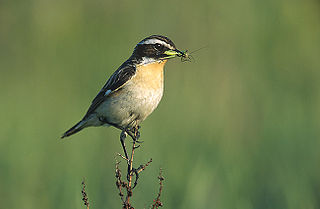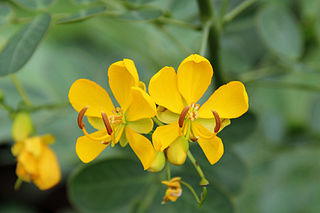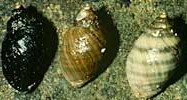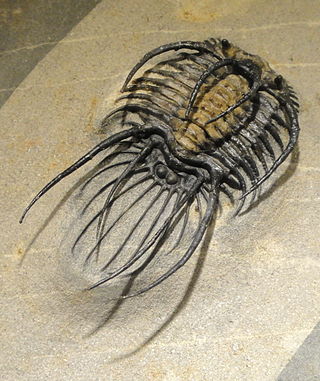
Malpighia emarginata is a tropical fruit-bearing shrub or small tree in the family Malpighiaceae.

Chats are a group of small Old World insectivorous birds formerly classified as members of the thrush family (Turdidae), but following genetic DNA analysis, are now considered to belong to the Old World flycatcher family (Muscicapidae).

Libinia emarginata, the portly spider crab, common spider crab or nine-spined spider crab, is a species of stenohaline crab that lives on the Atlantic coast of North America.

Prunus emarginata, the bitter cherry or Oregon cherry, is a species of Prunus native to western North America, from British Columbia south to Baja California, and east as far as western Wyoming and New Mexico. It is often found in recently disturbed areas or open woods on nutrient-rich soil.

The sickle-winged chat or sicklewing chat is a small passerine bird of the Old World flycatcher family Muscicapidae endemic to southern Africa. It is a common resident breeder in South Africa and Lesotho, and is also found in southernmost areas of Botswana and Namibia. Its habitat is Karoo scrub, short grassland, and barren sandy or stony areas. In western coastal areas, it also occurs on agricultural land.

Noronhia emarginata is a species of Noronhia native to Madagascar, now naturalized on Mauritius, Réunion and Bermuda.

Senna bicapsularis is a species of the legume genus Senna, native to northern South America, from Panama south to Venezuela and Colombia, and also the West Indies. Common names include rambling senna, winter cassia, Christmas bush, money bush, and yellow candlewood. In Florida, Senna pendula is usually cultivated as, and misapplied to, S. bicapsularis.

Idaea emarginata, the small scallop, is a moth of the family Geometridae. It was first described by Carl Linnaeus in his 1758 10th edition of Systema Naturae and it is found in Europe.
Hammanopyge is a genus of trilobites in the order Phacopida, that existed during the upper Ordovician in what is now Scotland. It was described by Pribyl and Vanek in 1985, and the type species is Hammanopyge unica, which was originally described under the genus Acidaspis by Thomson in 1857. The type locality was the Balclatchie Formation.
Microsynodontis emarginata is a species of upside-down catfish endemic to Gabon where it occurs in the Ogowe River. It was first described in 2004 by Ng Heok Hee.

Acriopsis emarginata, commonly known as the pale chandelier orchid, is a species of orchid endemic to Queensland. It is a clump-forming epiphyte with dark green leaves and curved, branching flower stems with many white and cream-coloured flowers.
Meadowtownella is a rare genus of odontopleurid trilobite found in Ordovician rocks. It is similar to Acidaspis cincinnatiensis but without the occipital spine.

Nucella emarginata, common name the emarginate dogwinkle, is a species of medium-sized predatory sea snail, a marine gastropod mollusk in the family Muricidae, the murex snails or rock snails.

Odontopleuridae is a family of odontopleurid trilobites found in marine strata throughout the world. Odontopleurids of Odontopleuridae first appear in Late Cambrian-aged marine strata, and the last genera perish by the end of the Frasnian stage during the Late Devonian. The members of Odontopleuridae are famous for their spinose appearance, having long, often numerous spines along the edges of their exoskeletons, and derived from ends of segments or tubercle ornaments.

Oraesia emarginata is a species of moth of the family Erebidae first described by Johan Christian Fabricius in 1794. It is found in Australia, New Caledonia, Indonesia, New Guinea, Pakistan, the Philippines, India, Sri Lanka, Sulawesi, Taiwan, China, Japan, Korea and Nepal as well as Eritrea, Ethiopia, Kenya, Namibia, Nigeria, South Africa, Tanzania, the Gambia, Uganda, Oman and Yemen.
Ornipholidotos emarginata is a butterfly in the family Lycaenidae. It is found in the Democratic Republic of the Congo and Tanzania. The habitat consists of forests.

Emarginata is a genus of birds in the Old World flycatcher family Muscicapidae that occur in southern Africa.

Elythranthera emarginata, commonly known as the pink enamel orchid, is a plant in the orchid family Orchidaceae and is endemic to the south-west of Western Australia. It is a ground orchid with a single flattened, hairy leaf and up to four glossy pink flowers. It is similar to Caladenia brunonis but is usually a shorter plant but with larger, pink flowers.
Mezira emarginata is a species of flat bug in the family Aradidae. It is found in Central America and North America.

Encope emarginata, a notched sand dollar, is a marine echinoid ranging the western Atlantic ocean. They are best known for their bioturbation in the sediment, relationship with crabs, and their widespread distribution.















